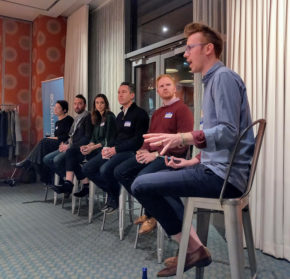Native commerce is a cutting edge concept in content monetization, and, as with anything new, it comes with its own learning curve, but that doesn’t mean that there aren’t companies who are already executing it to an almost scientific level. These three companies are doing native commerce right, and each in their own unique way.
Thrillist Media Group
The 10-year-old media company began as simply a guy-centric online guide to New York City and has since expanded to several dozen cities and become a prominent men’s lifestyle brand, culminating in the establishment of Thrillist Media Group and a $13 million round of fundraising in 2012. In addition to the core Thrillist property, the company operates Supercompressor, a tech and lifestyle portal, and JackThreads, an online commerce destination for men’s style that it acquired in 2010.
Since the acquisition, Thrillist has positioned JackThreads as the platform to purchase the kind of lifestyle products covered in Thrillist’s content, expanding Thrillist’s role as a destination for everything related to men’s lifestyle. Now, instead of having its readers go out-of-network to buy products, Thrillist provides an easy way for them to buy products relevant to their interests and adds further value by running exclusive deals and promotions. The numbers speak for themselves — JackThreads generates 80% of its revenue from commerce — and the effect on Thrillist’s editorial process has been negligible — content drives the commerce, not the other way around.
Evernote
Whoa…what’s the deal with this one? Evernote is, obviously, not a content site, but rather a cloud-based app focused on organization, note-taking, etc. However, Evernote’s business model can easily be compared to some publishers — both generally follow the freemium model, with “upgrades” being Evernote’s paid subscription and some publishers’ premium content options.
In addition to driving significant lead generation for its paid product, Evernote has used its core free product to build a strong brand and loyal user base, to which it can market events, other apps and, now, products through the Evernote Market. Users can easily jump over to the Market to subscribe to Evernote’s premium plan and buy Evernote-branded gear, items related to Evernote’s core function of note-taking (pens, notebooks, post-it notes, etc.), and even “Business Socks.” Evernote Market generated over $1 million in revenue in the first month of launch and accounts for ~30% of Evernote’s revenue.
The Next Web
Important note: The Next Web (TNW) is a StackCommerce client, so we may be a little biased here, but based on results, this list would be incomplete without them.
TNW is one of the world’s largest online destinations for the tech industry, holding a sizable audience of digitally-focused tech enthusiasts. Using the StackCommerce platform, TNW has added a catalog of tech products to augment its product-oriented editorial segments. Since the site sits right on the pulse of all things tech, TNW’s staff can provide seamless access to in-demand products to its users when they want them most. By focusing on quality rather than quantity, TNW has kept its audience experience essentially the same while adding the ability to generate thousands of dollars per commerce post when it wants to promote a product.
Grandex (Total Frat Move)
Austin-based Grandex, Inc., operator of popular Southern/fraternity culture brand Total Frat Move (also known as TFM), has turned its targeted hybrid editorial/user-generated content (UGC) model into a shining example of native commerce executed to a T.
After building up an extremely loyal, engaged community around it’s quasi-message board-style TFMs and augmenting that with original articles about fraternity culture and its own take on current events (and launching sister site Total Sorority Move), Grandex launched commerce brand Rowdy Gentleman to sell clothing and accessories tailor-made for the TFM audience. Shirts, hats and koozies emblazoned with sayings like “America: Back to Back World War Champs” have helped drive the commerce side of Grandex’s business to be the primary revenue generator for the company.

